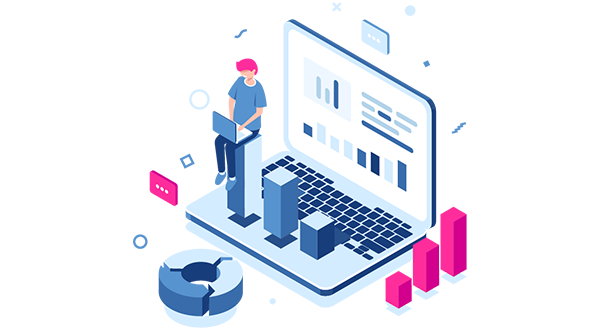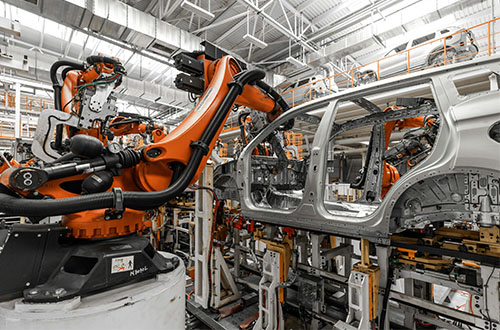

mLogica Thought Leaders: Why Should Legacy Modernization Be a Top Priority for Organizations?

The mLogica Migration Team
Deferring a mainframe modernization can be a costly and high-risk decision
Clinging to outdated technology puts your organization at a significant disadvantage. Legacy systems are inherently risky, with vulnerabilities that worsen over time, translating into higher costs and operational headaches. These systems are notorious for inefficiency, hindering innovation, and exposing sensitive data to security breaches. Legacy modernization to the cloud empowers enterprises to leverage the power of modern solutions, unlocking a wealth of benefits, including cost savings, increased flexibility, and robust security.
In December 2022, a major disaster occurred in the aviation industry, affecting one of the largest airlines in the U.S. Over 16,000 flights were canceled during the busy holiday season, leaving tens of thousands of passengers stranded. The root cause of this meltdown was the company’s outdated technology infrastructure, particularly its aging mainframe-based crew scheduling system. The system, which had not been properly modernized, couldn’t handle the complexities of reassigning flights and crew in real-time when a severe winter storm hit, leading to widespread operational failures.
While other airlines were able to recover quickly thanks to modern, flexible systems, the airline in question struggled due to its reliance on a legacy platform. The outdated system not only caused delays but also made it nearly impossible to manage crew and flight rescheduling efficiently.
The consequences were severe, including millions of dollars in financial losses from refunds, compensations, and penalties, as well as long-lasting reputational damage. This incident highlights the critical importance of mainframe modernization to ensure operational agility and avoid large-scale disruptions, particularly during peak periods or unforeseen events. It underscores the risks of relying on legacy systems that can no longer support the demands of modern operations in a fast-paced, digital world.
Prioritizing Legacy Modernization to the cloud for a Competitive Edge
Upgrading legacy systems strengthens your position and future-proofs your business in today's dynamic market. Here is how:
Reinforced Data Security: Outdated systems lack support for critical security patches, making them prime targets for cyberattacks. Modern solutions offer advanced encryption, robust access controls, and comprehensive security features, safeguarding sensitive data and minimizing the risk of breaches.
Scalability and Adaptability: Modern systems are inherently flexible and scalable, enabling organizations to adapt to changing market dynamics. Take mainframe modernization, for example. By migrating mainframes to the cloud, businesses can integrate new technologies to handle heavier workloads, allowing them to capitalize on emerging market trends and seize new opportunities.
Increased Efficiency: Legacy systems are plagued by operational issues, demanding constant IT support to maintain application functionalities and performance. This impedes innovation and product development. On the other hand, digital transformation frees IT staff from these burdens, allowing them to focus on automation and streamlining processes. User-friendly interfaces further enhance productivity for all users.
Digital-First Work Culture: Legacy Modernization to the cloud fosters a culture of agility by placing technology at the center of everything your company does. Executives leverage data analytics for deeper insights; IT teams utilize Artificial Intelligence (AI) for automation, and users embrace cloud-based tools for collaboration. This holistic approach drives agility and cost-efficiency, enabling continuous improvement and a competitive edge.
Improved Customer Experience: Revamping aging systems empowers companies to deliver customer-centric interfaces. Businesses can leverage AI and data analytics to understand customer behavior in real-time, personalize offerings based on individual needs and improve communication, resulting in higher customer satisfaction and increased sales.
Using Data Analytics to Support Innovation: Legacy systems hinder business intelligence due to siloed data, making it difficult to gain comprehensive insights. Digital transformation removes these barriers, allowing for deeper insights across entire datasets. This empowers executives to identify trends, support R&D efforts with data-driven insights, and identify market opportunities to stay ahead of the curve.
Talent Acquisition and Retention: The talent gap is a growing concern, especially for firms reliant on legacy systems like mainframes. Modernization attracts talent with expertise in modern technologies and reduces dependence on specialized mainframe skills, making your talent pool wider.
Streamlined Compliance Process: Businesses in regulated industries like finance and healthcare face increasing compliance risks with outdated systems. Digital transformation ensures compliance with industry-specific regulations and avoids legal issues associated with non-compliance. New and advanced technology solutions enable organizations to implement robust enterprise-wide access control and data security protocols.
Modernizing Mainframes: A Critical Step for Legacy Systems
Mainframes are crucial systems for many enterprises, particularly government agencies and large enterprises. However, their incompatibility with modern technologies obstructs growth and progress. Digital transformation addresses these challenges by:
Revamping User Interfaces: Web-based interfaces enhance user experience and collaboration, improving overall workflow efficiency.
Cloud Integration: Cloud migration leverages cloud-native features for faster service delivery and improved scalability.
Embracing Modern Tools and Technologies: Open-source applications, DevOps practices and AI/ML capabilities expand technological prowess and enable positive changes in business systems. LIBER*M Mainframe Migration Suite is mLogica’s flagship solution to liberate businesses from chains of legacy mainframe technologies. Our comprehensive migration solution provides a cost-effective route for enterprises to modernize z/OS and GCOS8 (BULL) mainframe applications with no impact to their business continuity.
Case Study: A Global Beverage Company’s Mainframe Modernization Journey
A nearly century-old American multinational beverage corporation with more than $33 billion in annual revenue and operations across the globe faced significant challenges due to its aging IBM z/OS mainframe environment. The legacy platform was error-prone, costly, and unable to meet modern business demands, causing latency issues that threatened their global operations. Additionally, the company lacked proper disaster recovery support, further compounding the risks of relying on outdated technology
Rather than continuing to invest in an obsolete system, the company partnered with mLogica to re-platform its infrastructure to a modern Linux platform on the AWS Cloud. Using mLogica’s LIBER*M Mainframe Modernization Suite, all legacy technologies, including COBOL, PL/I, and Easytrieve, were automatically refactored to function seamlessly in the new cloud environment. The migration not only improved the company’s operational efficiency but also enabled significant cost savings, better scalability, and disaster recovery capabilities, all while leveraging advanced cloud-native technologies. Modernization provided the company with the flexibility to hire more affordable talent and adapt to evolving business demands.
This case underscores the importance of modernizing legacy mainframe systems to ensure business continuity, reduce costs, and future-proof operations against potential disruptions.
The Road Forward...
Legacy modernization empowers companies to adapt and thrive in a rapidly evolving digital landscape. Modern technology safeguards your future, fuels innovation, enhances security, ensures compliance, and delivers value to stakeholders and customers. It's not just about hardware and software upgrades; it is about a cultural shift where technology is the driving force for business success. By embracing digital transformation and upgrading legacy systems, enterprises can unlock a world of possibilities and secure a competitive edge in the years to come.








































